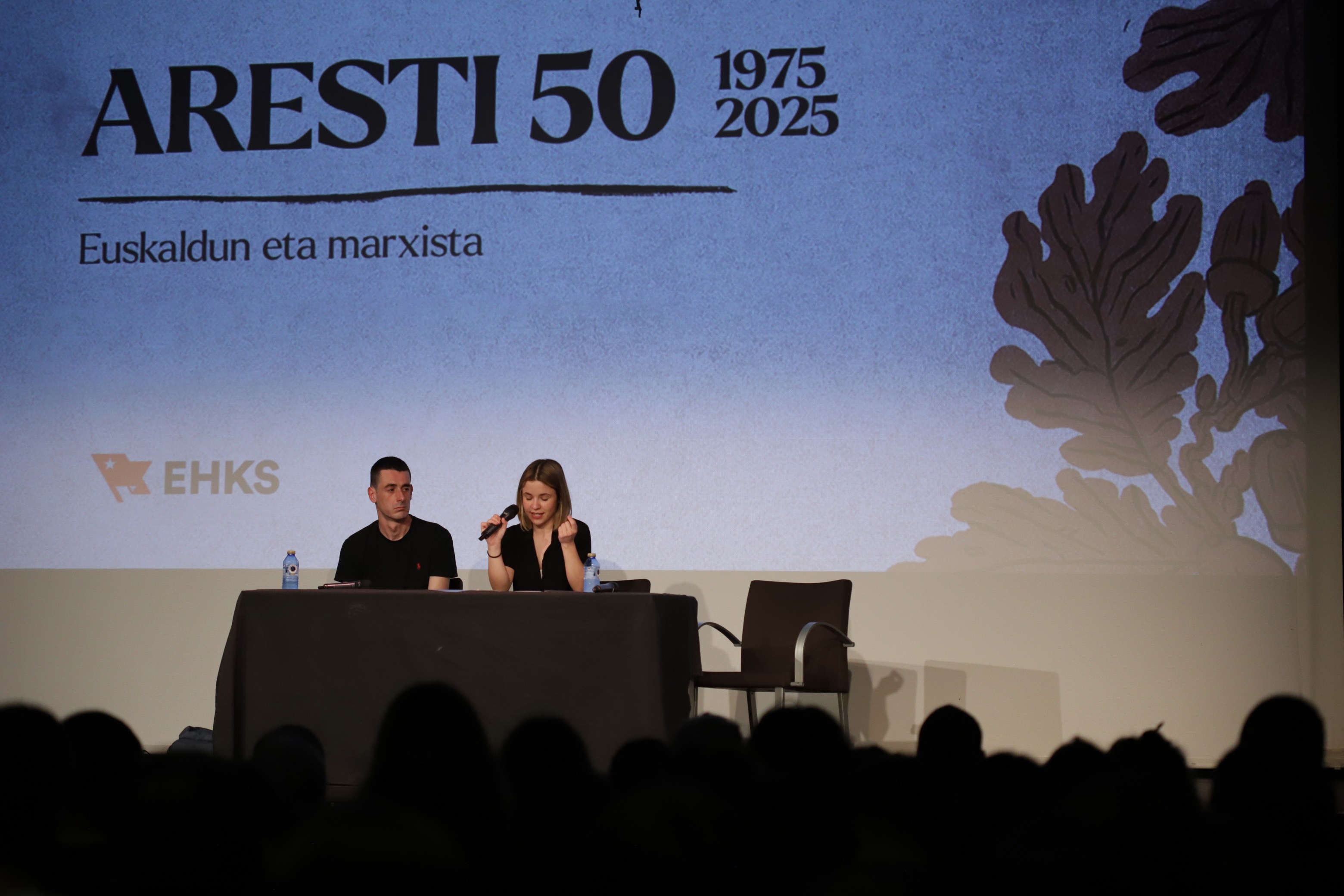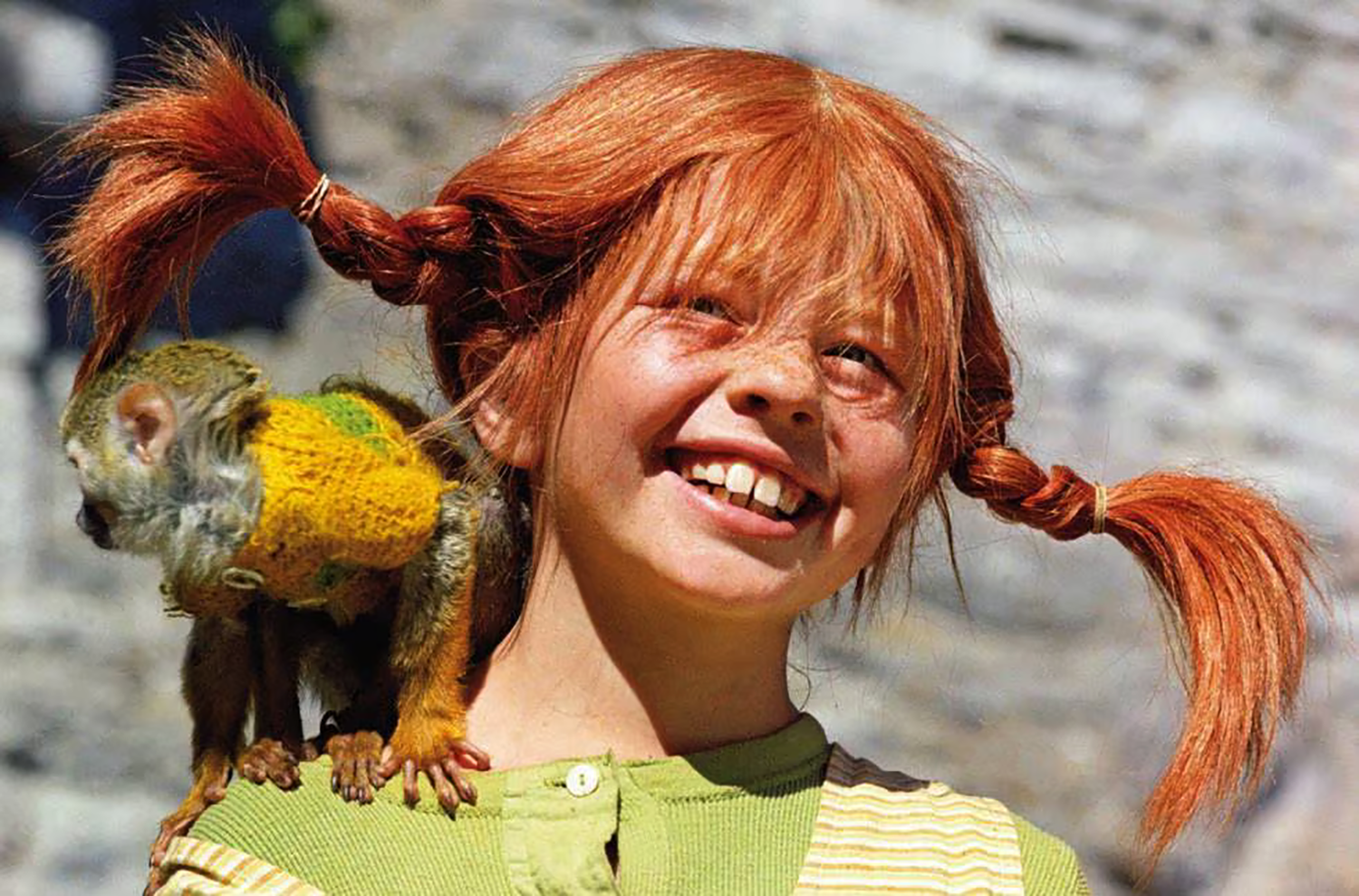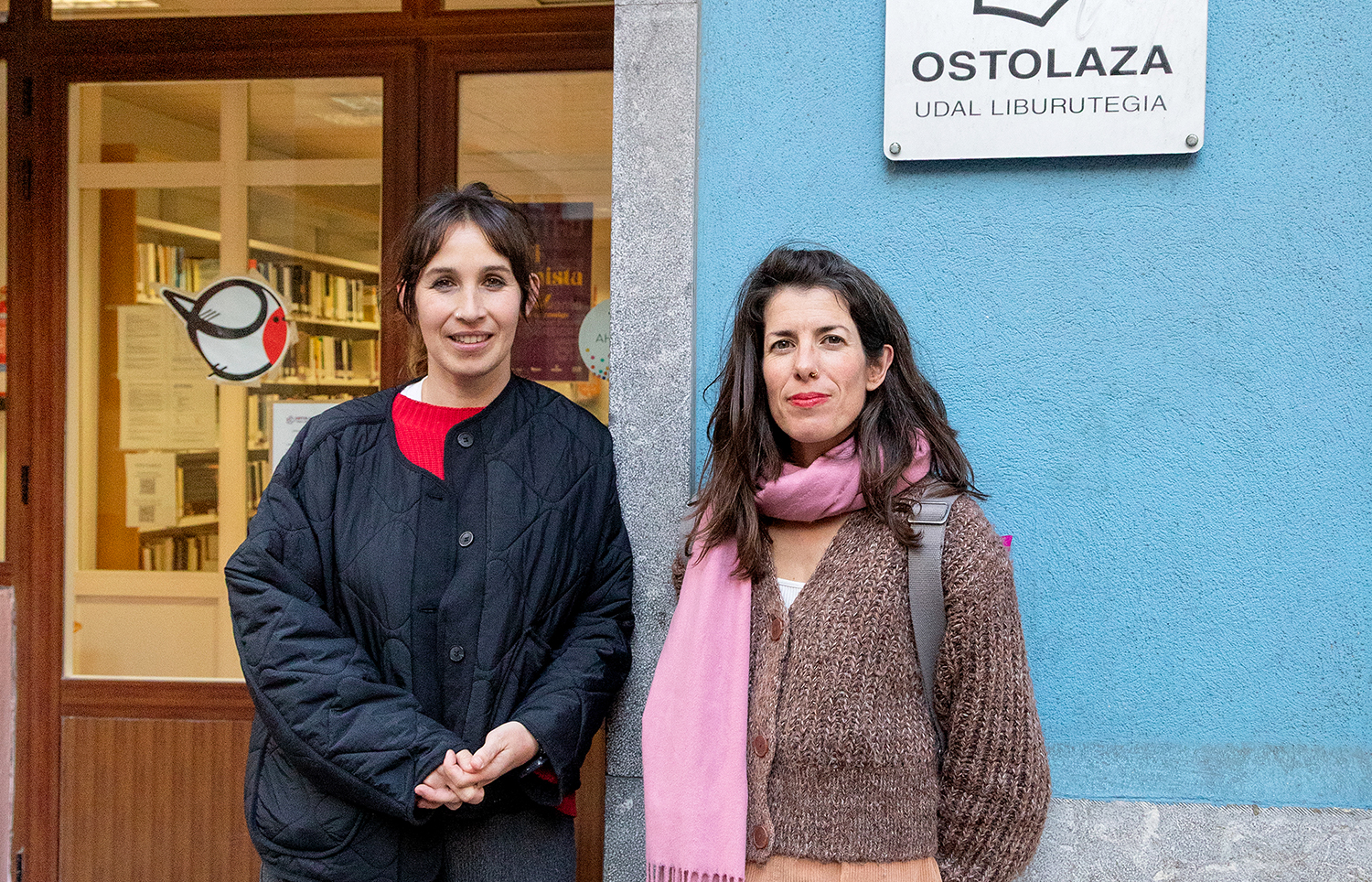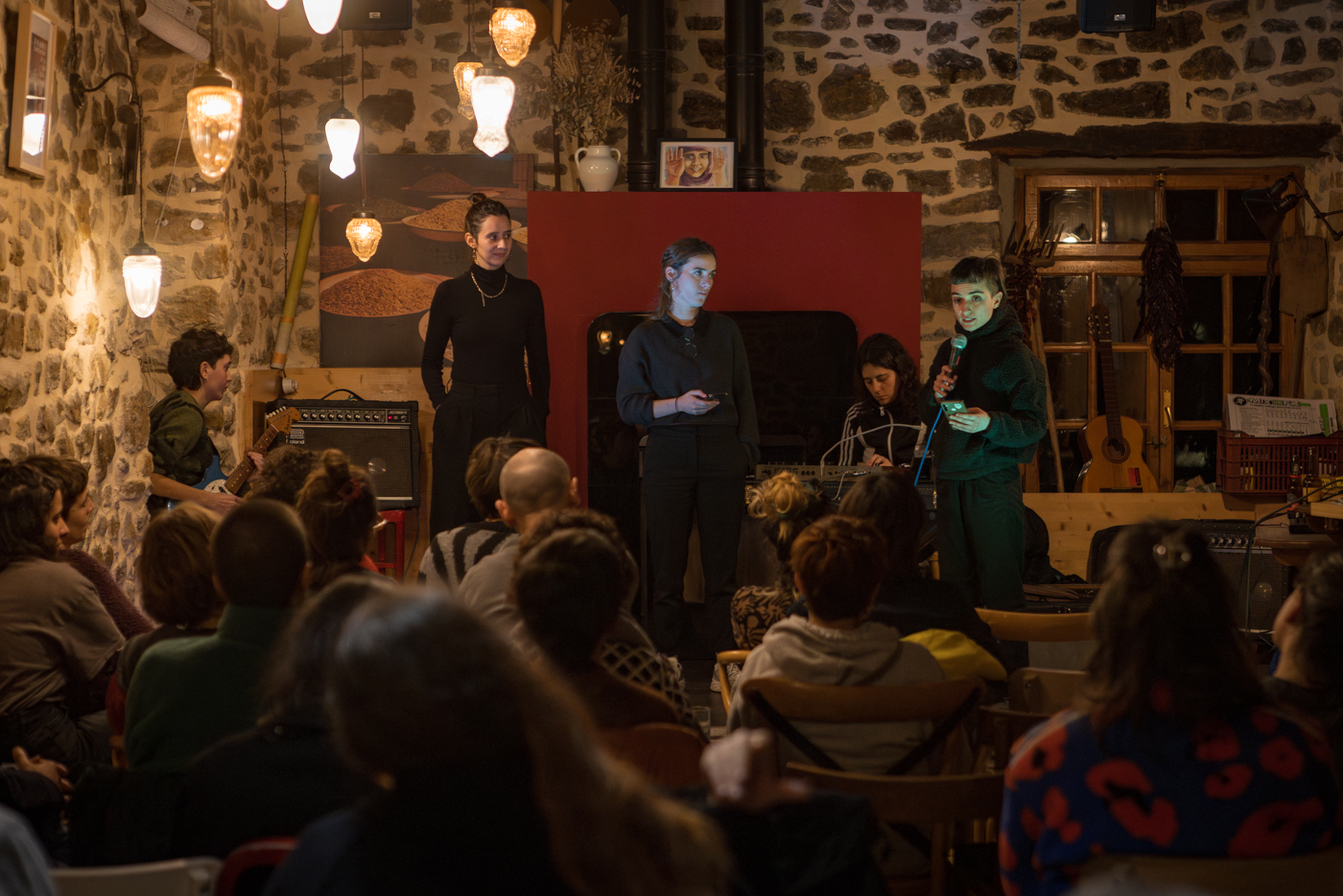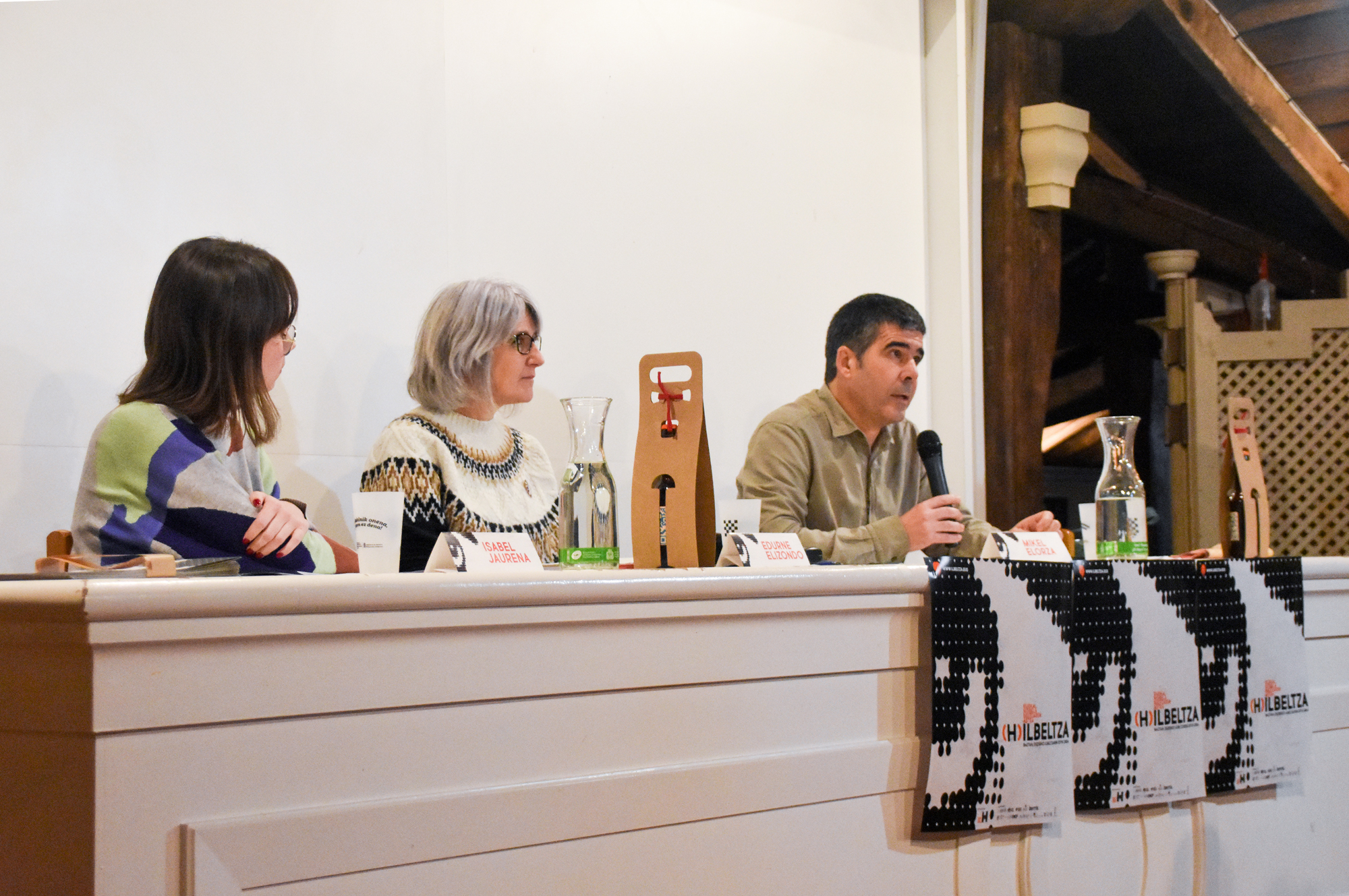"Zuzi excretory wants to spark debate in the Basque literature system"
- The title is clear enough: The excretory torch. Basque women writers and classical literature (TZ, 2025). And in his 300-page voluminous book, he has acted upon the women writers who have been in our country since the fourteenth century, as well as giving explanations to the teacher, helping the reader through the most beautiful classical texts. A job with a long breath, wisely invented to go a long way.

Which torch is the name of the book?
I wanted a picture in the title, a symbol. I walked around until the end of the book and when the last round came, I went to the first chapter, the ballads. The Basque ballads are texts full of rich, suggestive images, and one day I came across the ballad sung by Mrs. Santxa Otsoa de Ozaeta: Scent of Oñeta/Four Meats That Has You There, Martín Báñez Died in the Valleys. I'll take the arrow in one hand, / the excretory torch in the other, / I'll burn all the Aramayo. This is where the earthquake and the tremor of the new widow appear, how she will take her revenge: with the torch she will light the arrow and burn all of Aramaio... She was a woman of great strength, and I thought that Basque women writers share this characteristic, the desire to express themselves, the vitality, the strength... The torch seemed to me a beautiful symbol of it.
Is the torch excreted, or should it be excreted?
I think it's always been too excretory, but it's often been hidden, not seen. The title refers to it: “Let’s keep the excretory, let’s show that the torch is lit!”
Why has this torch been hidden?
Because patriarchy is ancestral, even in our country, and has been and is very strong, and because women and other oppressed collectives have had many obstacles to creation, publication and launch in general. This has been one of the reasons: they have had great problems to show themselves, but at the same time they have always been in the square, in one way or another. I wanted to show that there were Basque women writers. At the same time, I wanted to show those who have come to be known, those who have been lost along the way, those who have had the opportunities—the material conditions—to write, to create anything, or to socialize. This is also important.

How important has the Church been in keeping women on the sidelines?
It is not only the Church, but also the governments, states, elites, bourgeoisies, chiefs, notables and others of the time. It's the whole system. The Church has banned women from various activities—the Inquisition has been there, of course—but it has a clearer side. The church has an index and a reverse, because women have had the opportunity—following the religious path, that is—to read, to write... Convents and monasteries were once universities, and therefore that is also there. On the other hand, the religious field has also allowed women to be together to share their way of life. Therefore, the Church has both sides, dark and light, she has always been close to the nobles, but she has not been the only one.
"I think it is important to value the classics, to look at them from a different perspective and even to bring the classics to the world of today"
You're talking about classical literature in your work. How to define this classicity?
Classical literature can be defined in many ways. I like what Orpustan uses: “To be a classic, the writer must be dead.” Ha-ha-ha! Ha-ha-ha! I think it’s a beautiful image because it offers us a critical distance, it shows us that the writer in question and the work in question has not lost its value. And when a work becomes a classic, this is one of the characteristics, the permanence in time. Otherwise, a classic work has several layers, usually complex works, rich, of quality, although what is quality and what is not is marked by the time itself. I think we have abandoned the classics because we have identified them with being old, and today, the old is bad and we need a new one constantly.
Do you think this approach is correct?
We are not going to become a whim, we are not going to decide what is right and what is wrong, but in time it is the one that dictates and today it is the one where innovation takes place, where technology takes place, where we look to the future, artificial intelligence, social networks, development... to think, imagine and not look back on what will be next. This frenetic rhythm leaves no room to look back, the past is not valued, has no value, has no prestige. And, with the past, all the ideas, beliefs, cultures and others that are framed in the past are of little value.
We have the oldest texts in your book dating back to the 14th century. Today, the work is old with three years.
Our colleague Xabier Etxaniz [Erle] – and a collaborator of LUZ – says that today the life of a book is not longer than that of a yogurt; they both remain equal. And it's true. When we talk about books, we’re just talking about new ones. And we're also talking about the new one in the review. That’s why I like what Aritz Galarraga does in New. Select the classics and comment and criticize them from today. I think it's a nice exercise.
Since we are in the era of artificial intelligence, this intelligence also feeds on what has been done before, so that we can make a new one.
If we have any news, we must know what has come before us, the traditions, the roots. It is necessary to know what has been done before in order to imagine what we want to do next. But now the exercise of renewing the tradition is not carried out, with exceptions. In the world of music there is a desire to reform some old songs, but if not, there is no eternal tension between tradition and modernity.
You talk about the history of literature in the prologue of your book, and you have also made a note of the literature of history to the reader.
Good question... we need both, we need history, theory and criticism in literature. We need to take a look at literature. We have different linguistic, cultural and literary traditions around us, and it is curious how different literature has a place in the culture of one and the other, such as Spain, France, England or the Basque Country.These cultures exist side by side, but they work differently. The role of literature is different, and so is its prestige. For example, in the North and South of the Basque Country, it is amazing what different literary formation there is in compulsory education. It's kind of weird. The focus of learning the history, geography and culture of the nation-state is literature in the Northern Basque Country, but not in the South.
Speaking of the history of literature, there was a time when we had the works of Koldo Mitxelena and Villasante as manuals, canonical works. We also had access to Ibon Sarasola...
Currently, when studying Basque Philology, Mitxelena and Villasante are the pillars. But after the year 2000, other Histories of the 21st century have also been written. [Jon] Casenav mentions some. There are, for example, the works of Patri Urkizu and Mari Jose Olaziregi... And with them, we have revisions and adaptations because we need the one of the times. I think it’s important to create stories from different perspectives because History is rewritten every day. Efforts have been made, I believe, but there is no shortage of work to be done. Especially the classics.
Is another manual needed, or will we have to drink from eleven sources?
I think we're gonna have to use a bunch of manuals. We have the bases and the starting points, we have the trunk; we need the branches now. My feeling, however, is that in academia, today, the contemporary world is studied, and classical literature is mainly studied by linguists. And they lack a complete, diverse and updated literary study, simply because they tend to repeat Mitxelena, Villasante and the rest. Everyone accepts their referentiality, and we all know by heart what are the authors and classic works according to these two authors. We know their names by heart—Etxepare, Oihanart, Leizarraga, Axular...—but people have not read them. I think we should revise that canon, make it doubtful, bring it to the interview.
As you have written, the history of literature is linked to the diglossical state of language.
Or related to the history of our language. They're walking together, they're walking together. The historian Cira Crespo says, for example, that the literature of a minorized or oppressed language cannot be equivalent to the literature of a hegemonic language. We, on the other hand, have tried to walk for centuries as a hegemonic culture. There is a word in our literature that is often used and is “homologated”. It is due to the complex smallness. We've tried to imitate the big one, but that's hitting the wall. We will never reach that ideal. Expressing oneself and creating oneself in a language that is denied, attacked and underestimated is a political choice that is sometimes not tender.

Our writers are as good as any other language.
We have great writers, as well as works, both now and in the past. However, since it is a oppressed language, culture and literature, we have not seen it, we have not realized its value, we have not given it enough value and recognition. I, for example, have tried to show and emphasize the value of many texts through various texts in the book.
Basque women writers are the subject of your book. All of the books have been written in Basque, although there are exceptions. Why did you bring some of these?
I wanted to show what names—authors and works—have come to us, what works we know and what we don’t. Written by women, of course. It is important to realize that it is not only in spite of the gender, that is always where class, race and other things are intertwined in this matter. In fact, the working women, the wives of the small town, have devoted their time to the work of reproduction and have had the creation more difficult. This must also be taken into account, it is not only that she is a woman, but that she has had certain social and political conditions when creating anything.
There's an African-American author, Tilie Olsen, who talks about silence. According to her, there are a large number of creative women who have not had the opportunity to create, or who have started to publish after reaching the age of 40, or who have started to write poems or paint paintings after retiring. That's not a coincidence. Olsen also talks about genius, and who are the geniuses?
Men, most of them.
Those who have had an extensive network of surveillance, favourable economic conditions. Yes, they have been given to creation because they have had the opportunity. That's what Virginia Woolf said. It takes a room and a rent to write. What I'm saying is that we're talking about the room, forgetting the rent. That’s why I brought these exceptions to the book to show that it was written by queens, all of whom were always white, superior, and had contacts. It is no coincidence that Bizenta Mogel is the nephew of the priest and writer Joan Antonio Mogel. It is no coincidence that Bizenta Mogel is the husband of Eleuterio Basozabal, that is, the owner of an editorial. So who has come to us, what authors and what works?
"I think we have abandoned the classics because we have identified them with being old, and today, the old is bad and we need a new one constantly"
This is
why I have brought to Basque the case of the queen who wrote in French, I have brought to Basque the daughter of the famous family Katalina Erauso, and Rita Barrenetxea, about the circle of Basque illustrations, which Goya painted doing the portrait. I wanted to show who could write and why they chose not to write in Basque. It was precisely because at the time this was the language of expression, that it belonged to the Queen of Navarre, [Margarita], who wrote the stories in French, as the illustrated Xabier Munibe wrote El borracho burlado in Spanish.
There is no shortage of oral literature in our country, and you have collected it from there as well.
I wanted to expand the concept of literature because it is otherwise very restrictive. Nowadays, literature is nothing but a novel.
It's the truth!
I love the novel, but there is something else: a collection of stories, poetry, theater, bertsolarismo... In this book, for example, I have tended to emphasize theater and bertsolarismo and, in my image, we can find beautiful gems in both. There is often this tension between literature and bertsolarismo, and it is also a small “envy” from literature to bertsolarismo, seeing how many people are moved by the verse world. But in Cuba, for example, they distinguish between two types of reporters or improvisers. On the one hand, those who are able to improvise; on the other hand, those who are able to improvise poetry. Both are improvising, but the second is not only an improviser, but also a literary one. I think that applies to us too. Some writers are starting to publish literature. It's also funny because they're two different records, but in that eye. In literature, there has always been a relationship between oral and written. I wanted to explain that in this work.
Who is the book addressed to, for whom is it made?
That's a good question, too! Ha-ha-ha! Ha-ha-ha! First, I did it for myself. I've been thinking about this for a long time. What women have written throughout history, the desire to study literature from a feminist perspective, and, on the other hand, the desire to make my own contribution to history and anthologies. First for me, then. Next, I’m a teacher, I’m training high school teachers in the field of literature. I think it is important to value the classics, to look at them from a different perspective and even to bring the classics to the world of today. This book is one of the ways to do it.
On the other hand, for all of us who are in the Basque literature system, my book is a proposal for discussion, it has the desire to stimulate dialogue. We are all very lonely in the Basque literary system and I think it is important to share looks and to stimulate dialogue. I think we talk very little about literature in general.
Astelehen honetan hasita, astebetez, Jon Miranderen obra izango dute aztergai: besteren artean, Mirande nor zen argitzeaz eta errepasatzeaz gain, bere figurarekin zer egin hausnartuko dute, polemikoak baitira bere hainbat adierazpen eta testu.
Martxoaren 17an hasi eta hila bukatu bitartean, Literatura Plazara jaialdia egingo da Oiartzunen. Hirugarren urtez antolatu du egitasmoa 1545 argitaletxeak, bigarrenez bi asteko formatuan. "Literaturak plaza hartzea nahi dugu, partekatzen dugun zaletasuna ageri-agerian... [+]
1984an ‘Bizitza Nola Badoan’ lehen poema liburua (Maiatz) argitaratu zuenetik hainbat poema-liburu, narrazio eta eleberri argitaratu ditu Itxaro Borda idazleak. 2024an argitaratu zuen azken lana, ‘Itzalen tektonika’ (SUSA), eta egunero zutabea idazten du... [+]











